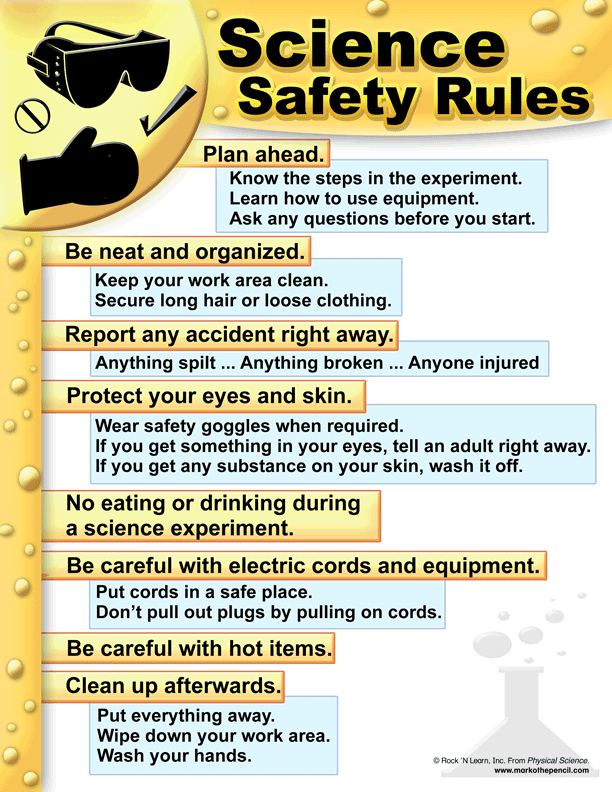
Kissimmee Homeschooling



Lab Procedures
Science Laboratory
Safety Rules
If you are working in a science laboratory at school there are some important rules that need to be followed before conducting your science experiment.
-
A teacher should always be present when entering the lab.
-
Leave all your belongings outside the lab.
-
No running in the lab, always walk to avoid accidents.
-
No shouting or messing around with anything or anyone.
-
Long hair should be tied back.
-
Safety goggles must be worn to protect your eyes.
-
Eating and drinking in the laboratory is not allowed.
-
Follow all instructions carefully.
-
Ask questions if you are uncertain about the experiment.
-
When finished with your experiment waste materials should be put in the correct containers.
-
Put away all your equipment and clean your work bench.
-
Wash your hands.
*Ask yourself a few safety questions before you begin any science experiment -
1.) Do I need to wear gloves?
2.) Do I need to wear safety goggles or safety specs?
3.) Do I need to wear a lab coat to protect my clothing?
*If working with any chemicals or products always read the labels to see if they are an irritant, toxic, hazard or corrosive and if so be such to take extra care when handling them and wear protection.


How to write a procedure
A procedure should be easy to follow. It should have step-by-step directions for conducting the experiment. Often it includes a sketch of how to set-up the experiment. The directions may be numbered to be sure they are done in the correct order.
Here's an example using the ice cube experiment.
-
Put two identical bowls on the counter.
-
Take two ice cubes out of the freezer and place one in each bowl.
-
Break one of the ice cubes into smaller pieces that are no larger than 1/4 the size of the whole ice cube.
-
Time how long it takes for all the ice to melt.
A good way to check the procedure is to ask someone else to read it, and then have them explain how the experiment is to be done. Often you can identify which steps need more details.





